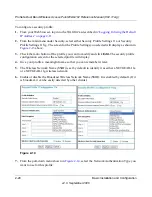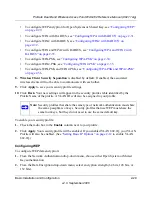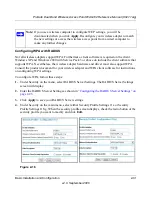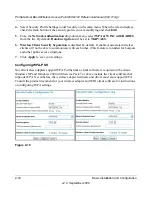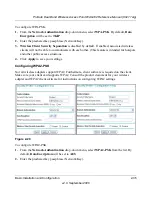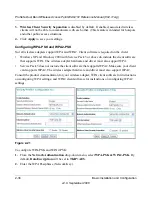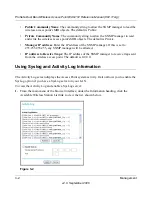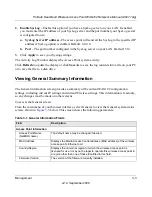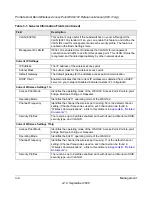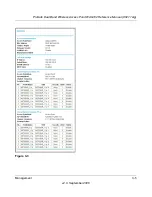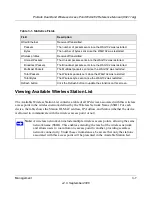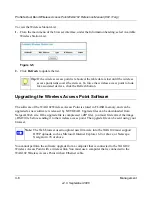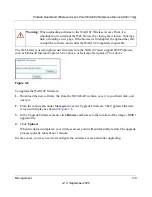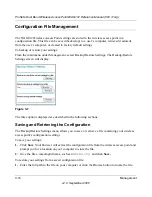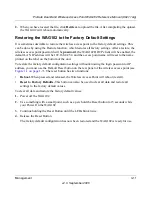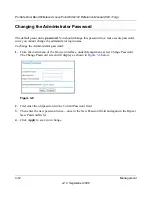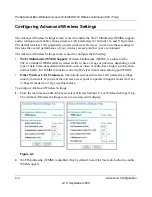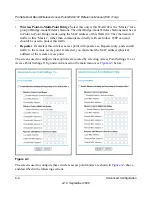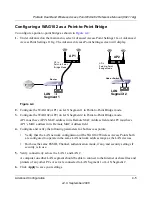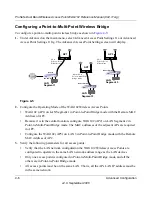
ProSafe Dual Band Wireless Access Point WAG102 Reference Manual (802.11a/g)
3-4
Management
v2.0, September 2006
VLAN (802.1Q)
This option is only useful if the hubs/switches on your LAN support the
VLAN (802.1Q) standard. If so, you can enable this feature, and define the
VLAN IDs used for management and each security profile. The feature is
enabled in the Basic Settings menu.
Management VLAN ID
If 802.1Q is enabled, this ID indicates the VLAN ID for management
connections and traffic to and from this access point. This VLAN ID must be
recognized, and handled appropriately, by other network devices.
Current IP Settings
IP Address
The IP address of the wireless access point.
Subnet Mask
The subnet mask for the wireless access point.
Default Gateway
The default gateway for the wireless access point communication.
DHCP Client
Enabled indicates that the current IP address was obtained from a DHCP
server on your network. Disabled indicated a static IP configuration.
Current Wireless Settings 11a
Access Point Mode
Identifies the operating mode of the WAG102: Access Point, Point-to-point
bridge, Multi-point bridge or Repeater.
Operating Mode
Identifies the 802.11 operating mode of the WAG102.
Channel/Frequency
Identifies the channel the wireless port is using. 52 is the default channel
setting. (Channel frequencies used on each channel can be found in
“Wireless Communications”; a link to this article is in
Appendix B, “Related
Documents
”.
).
Security Profiles
There can be up to 8 profiles enabled, each with its own profile name, SSID,
security type, and VLAN ID.
Current Wireless Settings 11b/g
Access Point Mode
Identifies the operating mode of the WAG102: Access Point, Point-to-point
bridge, Multi-point bridge or Repeater.
Operating Mode
Identifies the 802.11 operating mode of the WAG102.
Channel/Frequency
Identifies the channel the wireless port is using. 11 is the default channel
setting. (Channel frequencies used on each channel can be found in
“Wireless Communications”; a link to this article is in
Appendix B, “Related
Documents
”.
)
Security Profiles
There can be up to 8 profiles enabled, each with its own profile name, SSID,
security type, and VLAN ID.
Table 3-1. General Information Fields (continued)
Field
Description

